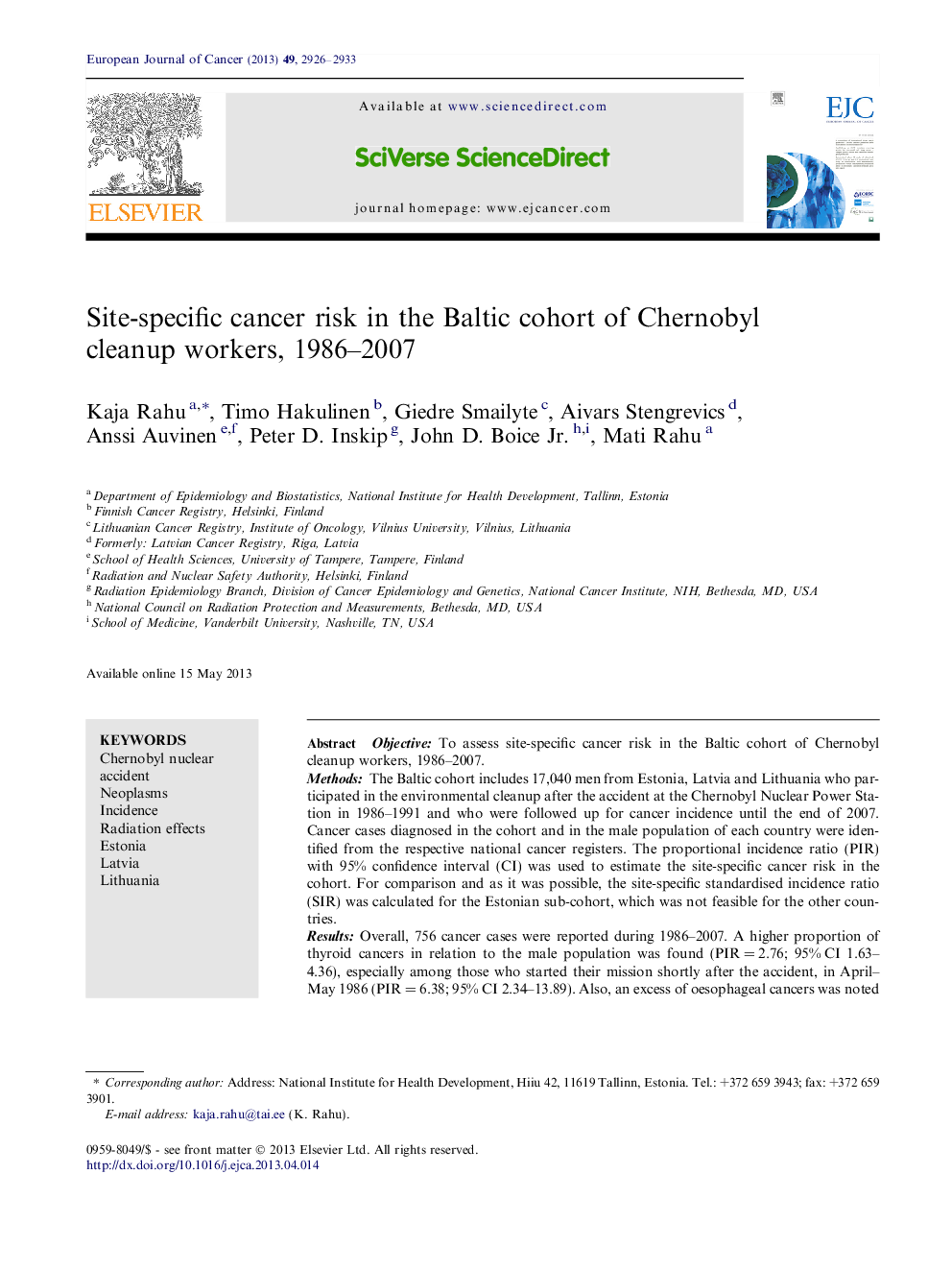| Article ID | Journal | Published Year | Pages | File Type |
|---|---|---|---|---|
| 2122219 | European Journal of Cancer | 2013 | 8 Pages |
ObjectiveTo assess site-specific cancer risk in the Baltic cohort of Chernobyl cleanup workers, 1986–2007.MethodsThe Baltic cohort includes 17,040 men from Estonia, Latvia and Lithuania who participated in the environmental cleanup after the accident at the Chernobyl Nuclear Power Station in 1986–1991 and who were followed up for cancer incidence until the end of 2007. Cancer cases diagnosed in the cohort and in the male population of each country were identified from the respective national cancer registers. The proportional incidence ratio (PIR) with 95% confidence interval (CI) was used to estimate the site-specific cancer risk in the cohort. For comparison and as it was possible, the site-specific standardised incidence ratio (SIR) was calculated for the Estonian sub-cohort, which was not feasible for the other countries.ResultsOverall, 756 cancer cases were reported during 1986–2007. A higher proportion of thyroid cancers in relation to the male population was found (PIR = 2.76; 95% CI 1.63–4.36), especially among those who started their mission shortly after the accident, in April–May 1986 (PIR = 6.38; 95% CI 2.34–13.89). Also, an excess of oesophageal cancers was noted (PIR = 1.52; 95% CI 1.06–2.11). No increased PIRs for leukaemia or radiation-related cancer sites combined were observed. PIRs and SIRs for the Estonian sub-cohort demonstrated the same site-specific cancer risk pattern.ConclusionConsistent evidence of an increase in radiation-related cancers in the Baltic cohort was not observed with the possible exception of thyroid cancer, where conclusions are hampered by known medical examination including thyroid screening among cleanup workers.
